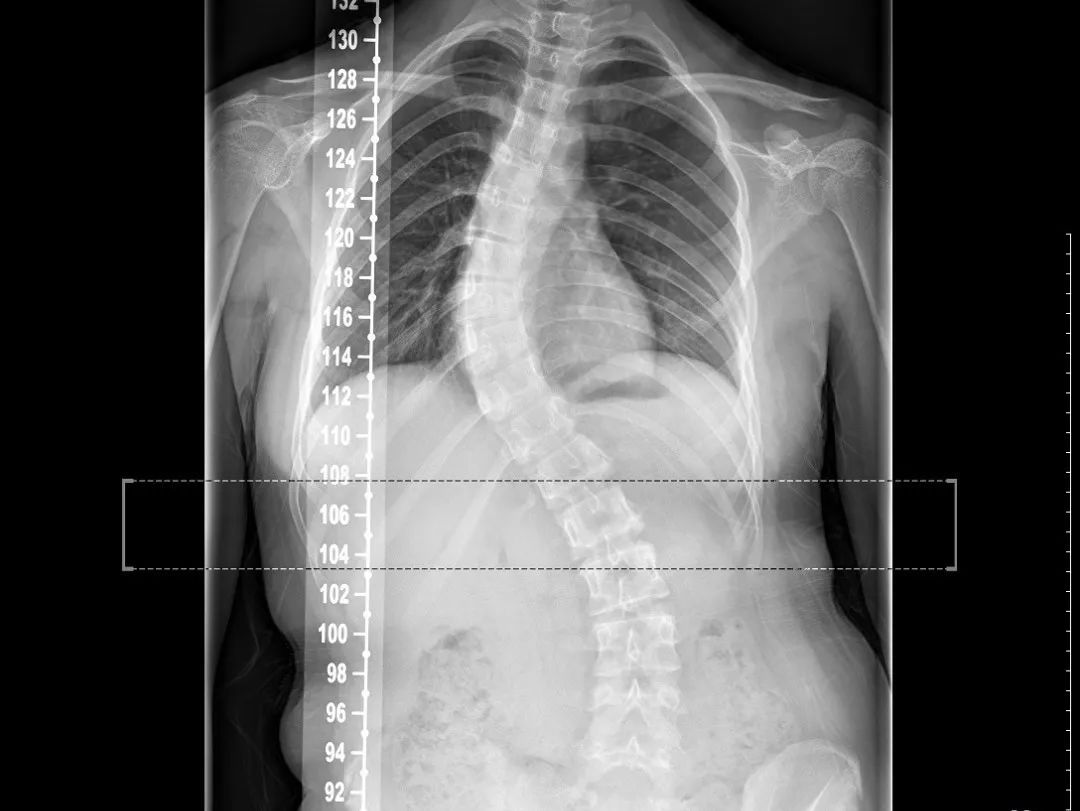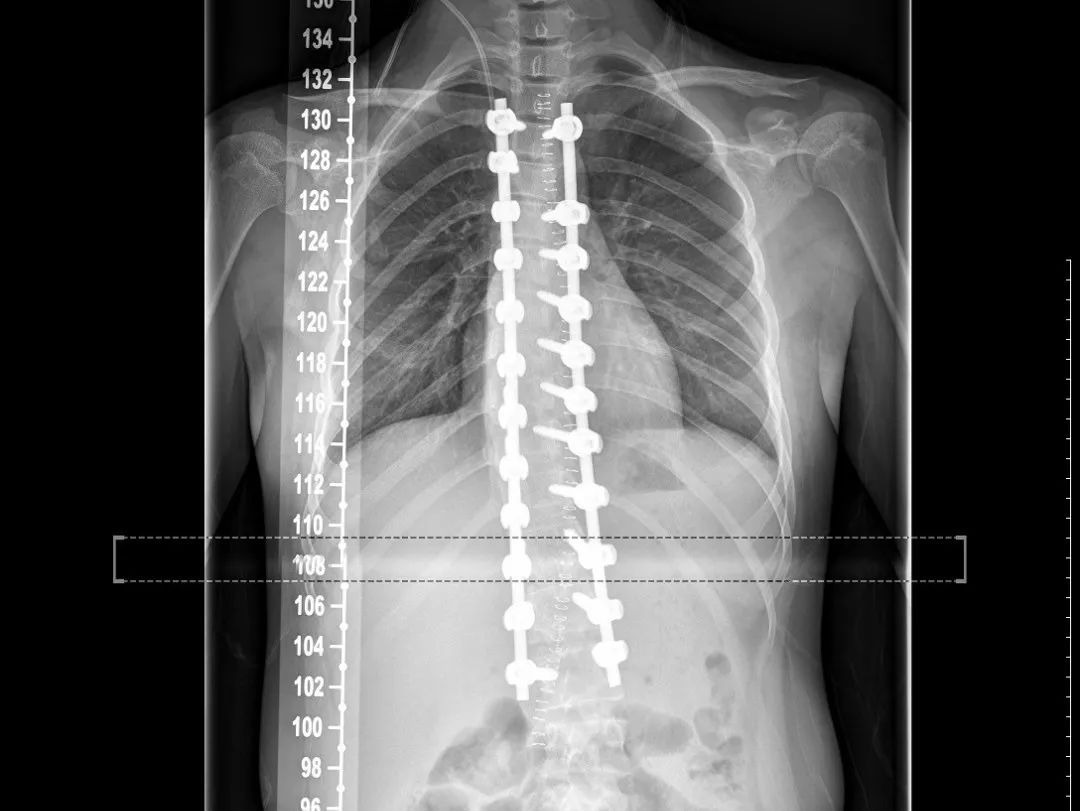內容目錄
Source: The Second Academy of Zhejiang University
Two years ago, 11-year-old Xiaozhuang went swimming with his mother. When changing clothes, his mother suddenly found that Xiaozhuang’s left and right shoulders appeared Obvious highs and lows. At first, I thought it was caused by carrying a schoolbag on one shoulder, and there was no other special physical discomfort, so Xiaozhuang’s mother didn’t pay attention, but as the shoulders became more and more serious, the back also appeared to be uneven. Symmetrical, the whole person is also crooked, Xiaozhuang’s mother can’t help but worry.
Because of the change in posture, Xiaozhuang became the object of ridicule of classmates in school, and Xiaozhuang was often depressed because of this. Xiaozhuang’s mother took Xiaozhuang to the hospital for examination. After the hospital’s judgment, Xiaozhuang was diagnosed with scoliosis.

▲Spine before Xiaozhuang surgery
The so-called scoliosis in children generally refers to the spine It exhibits a “C” or “S” shape bend during development. Good boy, how can you get scoliosis? “There are more than ten types of scoliosis. Idiopathic scoliosis is more common in adolescents, and Xiaozhuang is this type.” said Li Fangcai, director of the Spine Surgery Department of the Second Hospital of Zhejiang University: “As the most common type of spinal deformity, adolescents are particularly prone to scoliosis. The etiology of idiopathic scoliosis is currently unclear, but it is related to genes to a certain extent and has a certain tendency to cluster in families.”

▲Xiaozhuang’s spine after surgery
Finally, Director Li Fangcai’s team performed scoliosis correction surgery for Xiaozhuang, and he was discharged from the hospital 5 days after the operation, and he can go to school normally after a month. Now, Xiao Zhuang is finally able to stand up straight, his back is symmetrical and beautiful, and his whole person is much more cheerful and confident.
Before the age of 5, the greatest impact should be remembered to pay attention to children’s spinal deformities
Children’s spine grows rapidly before the age of 5, and the annual growth potential exceeds 2cm, and the annual growth potential from 5 to 10 years old is about 0.9 cm, the annual growth potential of puberty after the age of 10 is about 1.8 cm. Therefore, spinal deformities that occur before the age of 5 have the greatest impact on the trunk and thorax, resulting in severe thoracic deformities and significantly reduced lung capacity.
After birth, the lungs develop rapidly, and the number of alveoli gradually increases. The number of alveoli reaches 80% of adults at the age of 5, and basically reaches the adult level at the age of 8. Scoliosis that occurs before the age of 8 will reduce the number of alveoli due to thoracic deformity, which will eventually lead to the reduction of the ventilation area of the lung and the diffusion area of oxygen, resulting in restrictive ventilation dysfunction and cor pulmonale.
Adolescence accelerates development and can affect life expectancy in severe cases
The main problem with scoliosis in adolescence is that the deformity continues to progress, especially as children enter puberty (peak growth and development). ), the side bend angle may increase at an uncontrollable rate.
The child’s intuitive feeling is the “ugly” appearance caused by the asymmetry of the back, as well as the psychological barriers, anxiety and inferiority that may be caused by it. When the scoliosis angle exceeds 70°~80°, it will damage the lung function due to the reduction of the thoracic volume, affect the breathing, and make the muscles of the lower back very easy to fatigue and cause pain. When the scoliosis angle exceeds 100°~120°, the life expectancy will be affected due to severe impairment of cardiopulmonary function.
Difficult to prevent, difficult to detect Regular screening is very important!
Because the etiology of juvenile idiopathic scoliosis is currently unknown, it is difficult to prevent scoliosis well. In addition, scoliosis usually occurs without obvious symptoms, so it is difficult to detect early .
Parents can pay attention to the sitting and standing postures of school-aged children, and conduct regular screening for scoliosis. If the shoulders or waist are found to be asymmetrical, they can do a spinal flexion test, which is to bend the waist forward , and observe whether the bilateral lower back is symmetrical.

▲Spinal flexion test
If abnormality is found, it is necessary to go to the hospital for a clear diagnosis. Early detection, early diagnosis, and early treatment can minimize the harm of scoliosis to children as much as possible.
Is there any sequelae of corrective surgery? Will it recur?
Scoliosis surgery is only beneficial for patients who need surgery, and there are no obvious sequelae.
World Ladies Golf League champion Stacy Lewis, a patient with idiopathic scoliosis, continued her professional golf career after orthopedic surgery, 6 years from 2011 to 2014 1st place in the World Women’s Golf (LPGA) rankings. In 2015, a Taiwanese martial arts athlete with thoracic scoliosis returned to the training field 3 months after orthopedic surgery. 17 months after surgery, he participated in the 13th World Wushu Competition and won a silver medal. Therefore, scoliosis surgery is generally safe.
There are still many parents who will worry about the recurrence after surgery, fearing that their children will suffer twice. In fact, if the operation is successful, there will be no recurrence after surgery, but if the surgical strategy is wrong, there will be a certain probability of recurrence. Therefore, scoliosis must require specialist, specialized disease treatment.
Review: Xinya